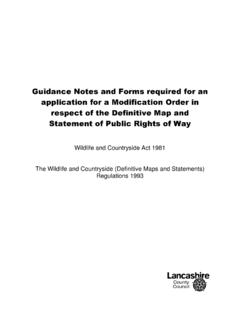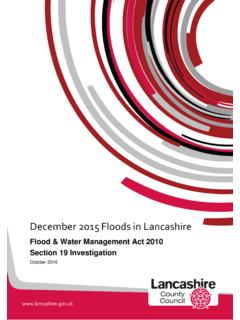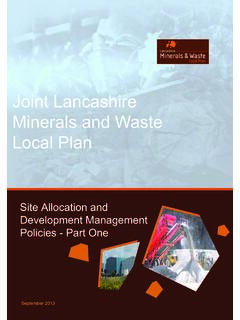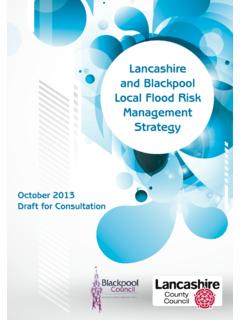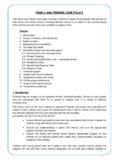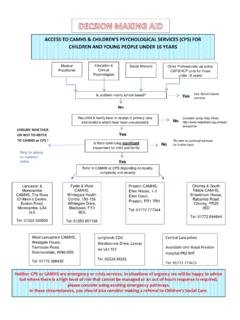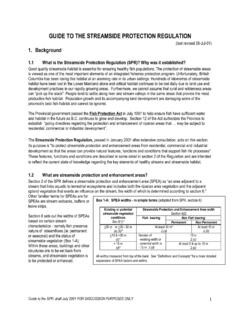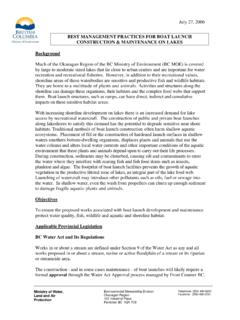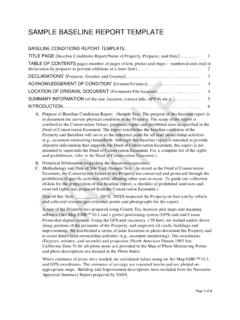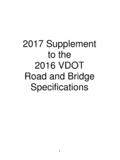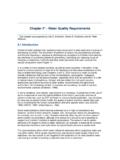Transcription of Lancaster District Flood Report - Lancashire County Council
1 Lancaster District Flood Report Recommended Actions February 2017 Lancashire County Council - District Flood Report 2 | P a g e Contents Report section and type Page No. 1. Background 3 2. Key Definitions 3 The Risk Management Authorities 3 The Risk Management Functions 4 Riparian Landowners 4 Interconnections between responsibilities 4 3 Key Functions of the Risk Management Authorities 5 The Environment Agency 5 Lancashire County Council 6 City and Borough Councils 6 Internal Drainage Boards 7 Water Companies 7 Civil Contingencies Responsibilities 7 4. Recommended Actions 8 County -wide Actions 8 District -wide Actions 11 Community Actions 12 5 Useful Links 52 Lancashire County Council - District Flood Report 3 | P a g e 1.
2 Background: As a Lead Local Flood Authority, Lancashire County Council has a role in coordinating Flood risk activities and ensuring the free flow of communication and collaborative works. In order to help achieve this, Lancashire County Council and relevant risk management authorities meet regularly to discuss local flooding issues and to identify opportunities for managing future Flood risks. This has worked very well up to now and has allowed risk management authorities to work closely together to tackle often complex and challenging situations. However following the significant flooding that hit Lancashire in December 2015, it became evident that improvements could be made to the way in which these messages get communicated to affected communities.
3 As such, Lancashire County Council has now developed a series of District level reports which aim to provide affected communities with information about what relevant risk management authorities are doing in their areas to help manage the risk of flooding from a variety of sources. These reports will identify opportunities for further investigation and investment, and will provide concerned homeowners and businesses with information about what they can do to help protect their own properties from flooding in the future. These reports will be compiled and published by the Lead Local Flood Authority based on data that has been provided by relevant risk management authorities.
4 These reports will be updated on a quarterly basis to allow affected communities to see progress and resolution of as many issues as possible, as quickly as possible. 2. Key Definitions The Risk Management Authorities The risk management authorities are identified in the Flood and Water Management Act, 2010 (FMWA) as follows: a) The Environment Agency (EA), b) The lead local Flood authority, c) A District Council for an area for which there is no unitary authority, d) An internal drainage board, e) A water company, and f) A highway authority. Each of these organisations has powers and duties under various legislation and regulations for the responsible management of natural water, Flood risk and in some cases coastal erosion.
5 The FWMA requires all the risk management authorities to cooperate with other relevant authorities in the exercise of their Flood and coastal erosion risk management functions. In Lancashire , the RMAs support partnership working in the following ways: at operational levels by joint investigations and through the Making Space for Water meetings; at tactical level by sharing priorities and direction between organisational managers, and at strategic level by engaging with Councillors/Cabinet Members/Senior Managers. Lancashire , Blackpool and Blackburn-with-Darwen are also represented on the North West Regional Flood and Coastal Committee where cross-boundary projects, resources and data are shared with Cumbria, Greater Manchester, Merseyside and Cheshire.
6 Lancashire County Council - District Flood Report 4 | P a g e The village of Earby in Pendle District is a special case in that it lies within a river catchment that falls towards North Yorkshire, so its local EA services are supplied through the Yorkshire team. This gives the Lancashire partnership a direct connection to the Yorkshire Regional Flood & Coastal Committee. Earby also receives services from the Earby and Salterforth Internal Drainage Board (IDB), which replaces a number of the lead local Flood authority functions. These functions are further explored in Section 3 of this Report . The Risk Management Functions The risk management authorities have responsibility for Flood risk management functions as defined under Section 4 (2) of the FWMA: a) a function under this Part, b) a function under section 159 or 160 of the Water Resources Act 1991, c) a Flood defence function within the meaning of section 221 of that Act, d) a function under the Land Drainage Act 1991, e) a function under section 100, 101, 110 or 339 of the Highways Act 1980, and f) any other function, under an enactment, specified for the purposes of this section by order made by the Minister.
7 Riparian Landowners The legal term 'riparian' is applied to landowners who own land adjoining or containing a river or watercourse. They have certain rights to use the water flowing across their land for their own purposes, and in regard to Flood risk management they also have a number of responsibilities, including the following: to maintain the bed and banks of the watercourse, and also the trees and shrubs growing on the banks; to clear any debris, even if it did not originate from their land. This debris may be natural or man-made; to keep any structures within their ownership clear of debris. These structures include culverts, trash screens, weirs and mill gates.
8 If riparian landowners do not fulfil their responsibilities they may face enforcement action taken by the relevant risk management authority. Interconnections between responsibilities Public sewers in Lancashire are principally the responsibility of United Utilities plc or Yorkshire Water plc. Copies of the record maps indicating the location of public sewers in Lancashire are held in the water companies' head offices. These companies also keep records of pumping stations and any water treatment works which form part of the public sewage system. Private drainage systems are the responsibility of each owner whose property it drains. Where more than one property uses a private pipe, responsibility is normally shared proportionately.
9 The private system comprises all the pipes up to the point of connection with a public sewer (this can include the entire system where connected to a septic tank, cesspool or soakaway). Formal records indicating the location of private drainage systems are not held by any RMA. The deeds of a property may include details. The highway surface water drainage of all adopted public roads, other than trunk roads or motorways, is the responsibility of LCC as the local highway authority, including roadside drainage gullies and certain roadside ditches. Drainage from trunk roads and motorways is the responsibility of Highways Lancashire County Council - District Flood Report 5 | P a g e England (formerly the Highway Agency).
10 Drainage of private unadopted roads is normally the responsibility of private property owners who make use of or adjoin the road. Land drainage comprises systems of rivers, watercourses, ditches, culverts, pipes, lakes and ponds intended to drain water resulting from rainfall and flows from underground sources. Typically the primary responsibility for maintaining responsible flows in land drainage systems lies with the riparian owner or owners, with the LLFA, EA, IDB and local councils holding enforcement powers to use if the land owner/s default in their duties. All drainage systems eventually discharge into the sea as the lowest possible point for water to collect. In Lancashire , this is at Morecambe Bay or the Irish Sea directly.


